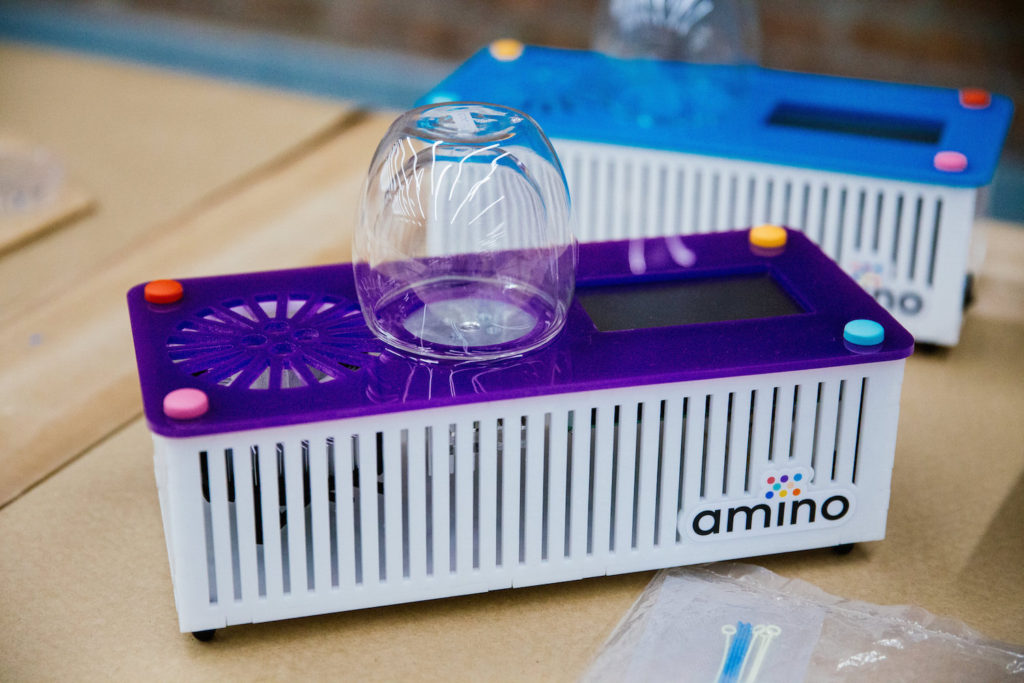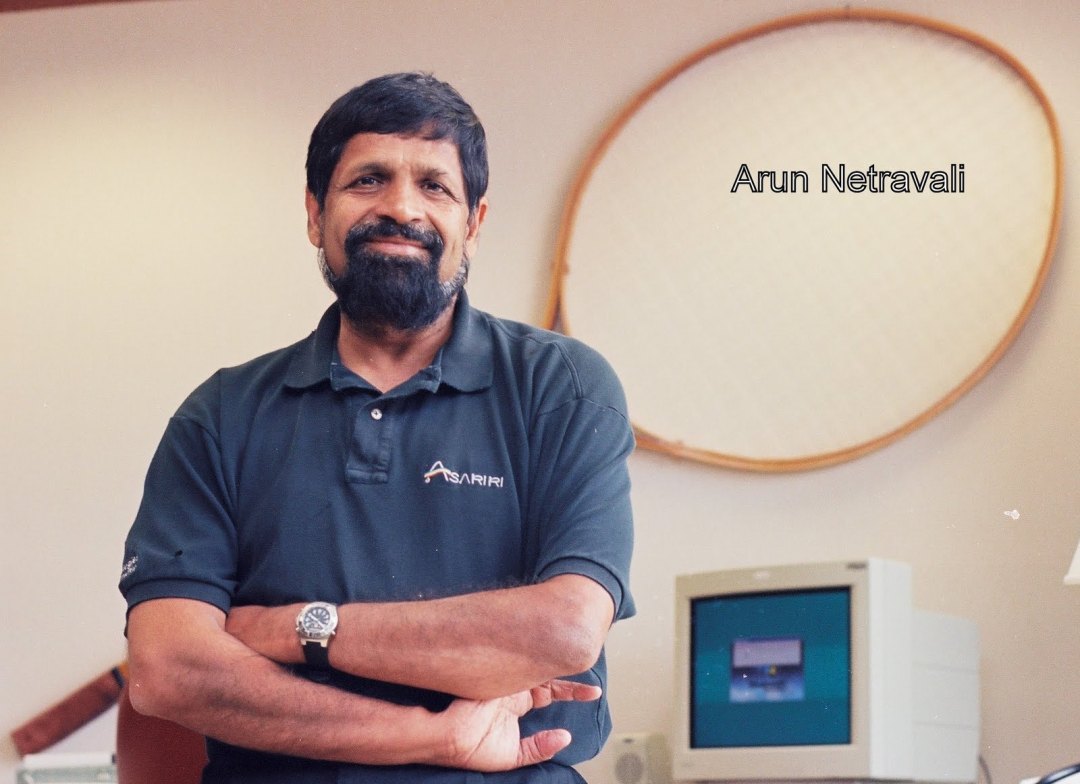
This Startup Is Creating DIY Kits to Teach Molecular Biology like Coding
- Rendezvous
- 5.9K
We are in the era of the Biorevolution and the Recombinant DNA technology is being used to “program cells” to make important things like medicine, industrial products, and food. Just like the computer revolution took the world by storm in the last decades, the Biorevolution will rock the world in the coming decade.
A startup called Amino labs is on a mission to bring this Biorevolution to the world by designing user-friendly kits to teach molecular biology and genetic engineering.

Can you tell us about the founding members of Amino Labs and what inspired you to build Amino Labs?
Amino Labs has 2 founders: (myself) Julie Legault, a designer-maker and Justin Pahara, a life scientist. We met during a DNA Programming workshop Justin was leading in MIT Media Lab’s Job Ito kitchen. It was my first time doing any life sciences out of high schools, and we managed to program a living organism so that it would produce Violacein, an anti-cancer compound.
This was incredibly inspiring to me for my design practice and research. However, even with the best facilities and expertise, I had access to at MIT and beyond, it was difficult to reproduce the work done in this workshop and go further in my research as a new genetic engineering learner. There was an equipment barrier – the labs were expensive, hard to access and scary for a beginner; the DNA, bacteria, and reagents were also hard to find, to understand and to play with.

I had to constantly ask Justin and other scientists help in sourcing materials and understanding the basics. There was no beginner’s kit out there that would allow me to re-create this first hands-on workshop experience on my own, and go from there, in a space, at my pace. So this is where Amino Labs comes from, from my first hands-on experience in trying genetic engineering, I was inspired and felt empowered to understand and participate in the complex discussions genetic engineering brings to our daily lives, to society.
We are democratizing access to a safe beginner’s hands-on experience in genetic engineering that doesn’t require a scientist present, or thousands of dollars of equipment and reagents so that they can be inspired and empowered by genetic engineering, not afraid.
Can you also tell us about Amino Labs? How did you come up with this name?
Amino the name we came up with for Julie’s thesis project, from which Amino Labs stems. Quite a lot of names were discussed, but amino stood out as being a very friendly sounding name (in French, it sounds like ami – friend)!. 
What is current focus market and who are your potential competitors?
At the moment, we focus broadly on 3 market segments: the at-home consumers/makers, the traditional education market, and the alternative education model such as museums and science camps.
As this is still a developing market, there are few direct competitors. Traditionally companies will only exclusively sell to schools and create materials for teachers who already have experience in research labs, with the subject.
Tell us more about one problem you are trying to solve at Amino Labs?
Inventing, building and deploying tools that make programming biology accessible to millions more will be key in driving wide-spread meaningful solutions to our greatest problems— all in our children’s lifetimes. As a team of scientist and designer-maker, we have already taken significant steps on this journey and are now growing our efforts to help invent the future of life science research. Our approach to creating tools that empower the next generation scientific community and supports science literacy has impacted hundreds of future scientists, biotechnologist, science-oriented artists, and executive. Breaking down the complexity surrounding the first steps towards life science research is at the center of the needed change.
As innovators, we created new tools to help us fulfill our mission — not everyone is an expert in using complex technologies, and systems developed by experts for experts are limiting access, and therefore progress. Our easy-to-use personal bio labs systems focus on onboarding new users into life sciences and are compatible with the latest breakthrough such as CRISPR gene editing.
Our tools are developed with curriculums and activities in mind to seamlessly integrate biology into engineering, mathematics, physics, arts, literature and computer science. An upcoming publication in collaboration with a Massachusetts school for Science, Creativity, and Leadership will make these activities compliant with U.S. middle schools requirements, from coast to coasts.
What is your opinion about the gender gap in STEM education and how would you address this challenge?
An awesome thing about working with genetic engineering is that there is already a very strong female representation in life sciences and biology. It appears as one of the science women and girls generally gravitate to. By integrating more biology, genetic engineering and general life sci in the STEM, it is a great way to diversify the pool of participants in the education sector, and crossbreed interest from biology to math to engineering.
Integrating Arts in the traditional STEM, as with the STEAM movement (Science Technology Engineering Art Math) is another positive tool to make young women feel more comfortable in joining STEM programs. Although no disciplines should be gendered, bringing together ones that traditionally appeal to different genders together can help kickstart cross-disciplinary interests.
How much are the products/services priced at? How has the response been so far?
The DNA Playground starter pack is $382, with the multi-purpose minilab being 349 and the engineering experiment kit $33. The response has been inspiring and rewarding; we have children as young as 6 years old learning alongside parents and siblings at home, all the way to high school and college genetic students discovering in the classroom. I am quite happy to say we also have art teachers, artists and designers of all ages creating with the DNA starter pack.

What were some of the biggest challenges while building the product early on and how did you solve them?
The main challenge was understanding and implementing the right feature set for a beginner’s hands-on genetic engineering experience, both technically and for the user experience. We solved through iterative design with the feedback we gather by doing many, many, many workshops with users of different backgrounds, ages, and abilities.
What are your achievements so far? And anything exciting happening in the near future?
We officially released the manufactured version of the DNA Playground minilab last fall! We are working on a collaboration with a BioArtist in New York for an Art kit to be released soon, as well as a whole new set of engineering experiences beyond the pigment-producing bacteria for 2018.
Are you tapping into the Asian education market? And if you are pursuing this idea, who will be your potential partners?
The demand in Asia has been quite high, and we do sell to the Asian market already from our own webstore. We have some partnership developing at the moment in both China and the Middle East. We are always happy to hear from potential partners.
Learn More About Amino Labs
https://www.facebook.com/aminobiolab/
https://www.instagram.com/aminobiolab/
For the latest Science, Tech news and conversations, follow Research Stash on Twitter, Facebook, and subscribe to our YouTube channel


